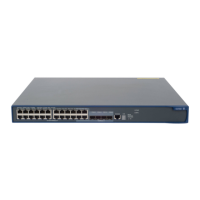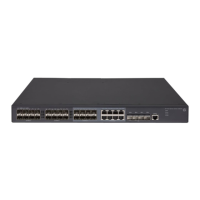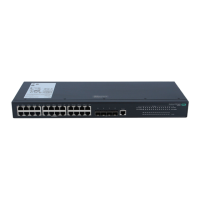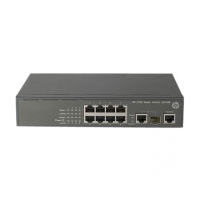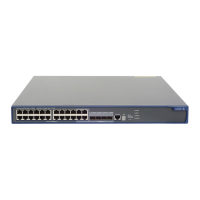252
* >e 2.2.2.2/32 3.1.1.1 0 0 65009?
e 3.1.1.0/24 3.1.1.1 0 0 65009?
* > 8.1.1.0/24 8.1.1.1 0 0 i
* >e 9.1.1.0/24 3.1.1.1 0 0 65009?
Two routes 2.2.2.2/32 and 9.1.1.0/24 have been added in Router A's routing table.
# Display the BGP routing table on Router C.
[RouterC] display bgp routing-table ipv4
Total number of routes: 4
BGP local router ID is 3.3.3.3
Status codes: * - valid, > - best, d - damped, h - history,
s - suppressed, S - Stale, i - internal, e - external
Origin: i - IGP, e - EGP, ? - incomplete
Network NextHop MED LocPrf PrefVal Path/Ogn
i 2.2.2.2/32 2.2.2.2 0 100 0 ?
* >i 3.1.1.0/24 2.2.2.2 0 100 0 ?
* >i 8.1.1.0/24 3.1.1.2 0 100 0 65008i
* >i 9.1.1.0/24 2.2.2.2 0 100 0 ?
The output shows that the route 8.1.1.0 has become valid and the next hop is Router A.
Verifying the configuration
# Ping 8.1.1.1 on Router C.
[RouterC] ping 8.1.1.1
Ping 8.1.1.1 (8.1.1.1): 56 data bytes, press escape sequence to break
56 bytes from 8.1.1.1: icmp_seq=0 ttl=255 time=2.000 ms
56 bytes from 8.1.1.1: icmp_seq=1 ttl=255 time=0.000 ms
56 bytes from 8.1.1.1: icmp_seq=2 ttl=255 time=0.000 ms
56 bytes from 8.1.1.1: icmp_seq=3 ttl=255 time=0.000 ms
56 bytes from 8.1.1.1: icmp_seq=4 ttl=255 time=1.000 ms
--- Ping statistics for 8.1.1.1 ---
5 packet(s) transmitted, 5 packet(s) received, 0.0% packet loss
round-trip min/avg/max/std-dev = 0.000/0.600/2.000/0.800 ms
BGP and IGP route redistribution configuration example
Network requirements
As shown in Figure 63, all devices of company A belong to AS 65008 and all devices of company B
belong to AS 65009. AS 65008 and AS 65009 are connected through Router A and Router B. The
administrators want that Router A can access network 9.1.2.0/24 in AS 65009, and Router C can access
network 8.1.1.0/24 in AS 65008.
